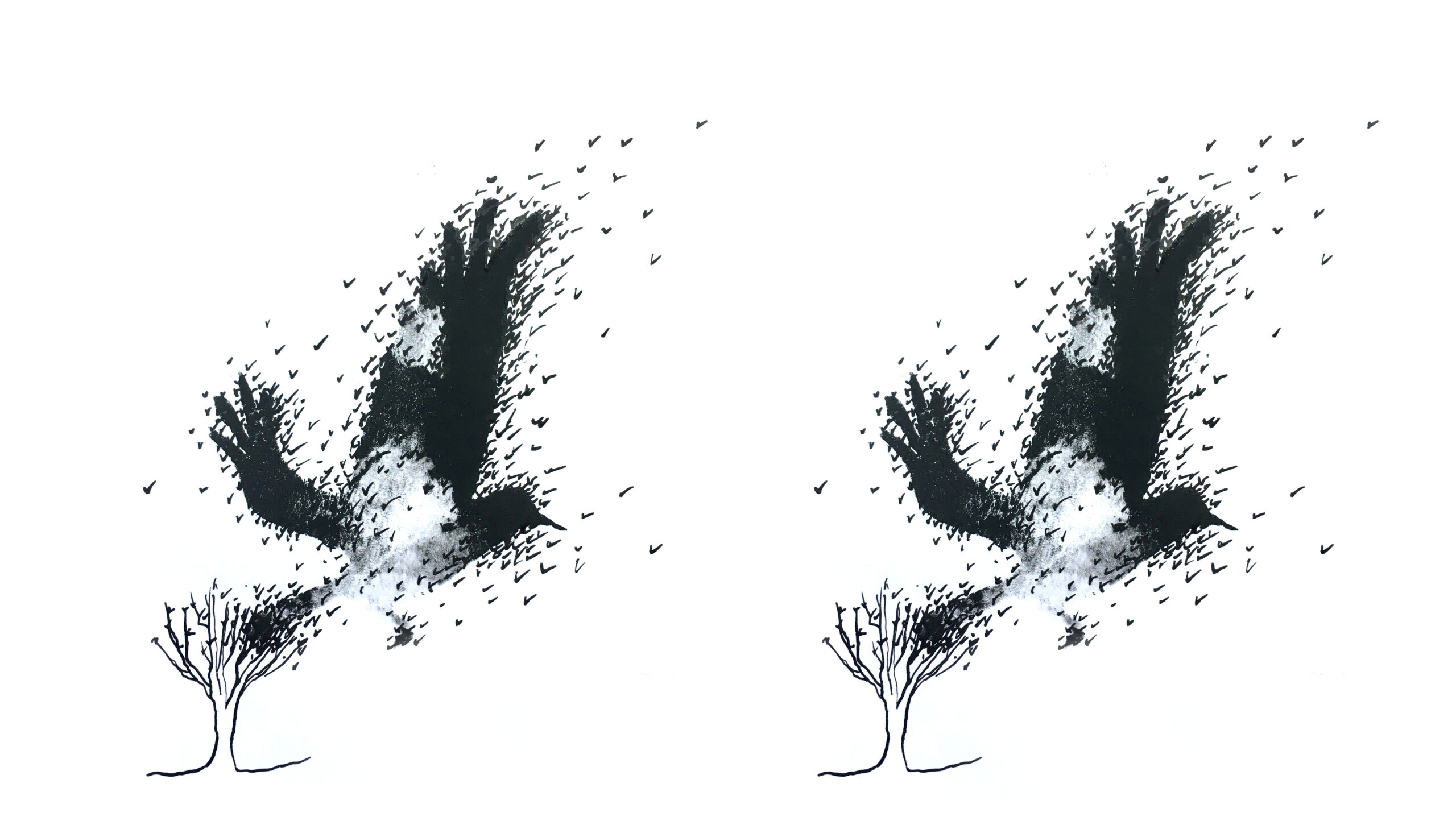They seem to move as one in a complex dance. A spectacular show, but it is not put on for our benefit, of course. So why do they do it? And why don’t they collide?
There are three main reasons why starlings and some other birds swarm together in huge flocks, says behavioural ecologist Sjouke Kingma. ‘First of all, they are safer in a large group, and that applies to a lot of prey animals. Think schools of fish or wildebeest on the savanna.’ While a large swarm catches the attention of birds of prey, it is not easy for them to select a victim from that swirling mass. ‘Also, starlings look for a place to go to roost at dusk. The big swarm helps them all find a good place. It is how the birds communicate to tell each other where there is food or a good place to stop for the night. There are also birds that fly in groups to save energy – like geese that fly in formation. They are a bit like racing cyclists that cycle in each other’s slipstream. But that’s a bit different to swarming.’
It is safer in a large group, and that goes for many prey animals such as schools of fish or wildebeest on the savanna
Sjouke Kingma, behavioural ecologist
How do they avoid colliding when thousands of them appear to dart in all directions like a whirlwind? ‘Different studies have been done on that. Firstly, all the birds fly at the same speed, which for starlings is an average of 36 kilometres an hour. If you all go at the same speed, you don’t collide so easily, except when you take a corner.’ But the birds have a trick for that too. ‘From a computer simulation it appears that each bird keeps an eye on a maximum of seven other birds near it. If one of those birds changes direction, the whole lot go with it. Other groups follow later so the movement ends up rippling through the whole flock, a bit like a stadium wave , although there you only watch what your immediate neighbour is doing. Research has also been done on budgerigars in a wind tunnel, to find out how they avoid collisions if they fly into each other head on. It seems that budgies always veer to the right if there is a risk of a crash. That’s clear at least.’
Every day we are bombarded with masses of sometimes contradictory information on pressing issues. In this feature, a WUR scientist gives you something to hold on to. What are the facts of the matter? Every question makes you a little wiser. Do you dare to ask yours? Email us at redactie@resource.nl

 Illustration: Marly Hendricks
Illustration: Marly Hendricks